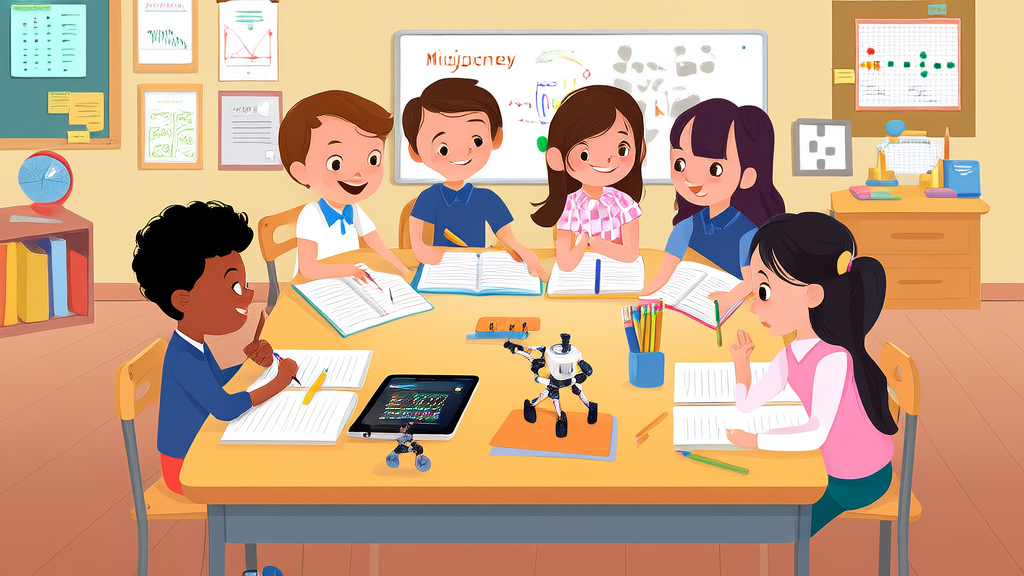Transforming K-12 Education: 30% Math Score Boost with AI and PBL

Empowering the Future: Navigating K-12 Education in 2025
Welcome to our exploration of the dynamic world of K-12 education, a journey that is as much about nurturing young minds as it is about embracing the latest advancements in teaching and learning. As we stand at the midpoint of 2025, it's clear that the educational landscape has undergone significant transformations, driven by innovative methodologies, deepened understanding of child development, and the integration of cutting-edge technology. Whether you're a parent seeking to support your child's growth or an educator looking to enhance your classroom, this post will provide valuable insights and practical tips to help you navigate these exciting times.
The Power of Modern Teaching Methodologies
In recent years, traditional lecture-based teaching has given way to more interactive and student-centered approaches. One such method is project-based learning (PBL), which encourages students to engage deeply with content through hands-on projects. For example, a science class might design and build solar-powered vehicles, integrating lessons on physics, engineering, and environmental science. Studies have shown that PBL not only enhances critical thinking and problem-solving skills but also boosts students' motivation and engagement.
Another effective approach is blended learning, which combines face-to-face instruction with online resources. This model allows for personalized learning paths, where students can work at their own pace and receive immediate feedback. A case study from a school in California demonstrated that blended learning led to a 20% increase in student performance in math and reading over a single academic year.
Child Development Insights and Research
Understanding the stages of child development is crucial for both parents and educators. Recent research has highlighted the importance of social-emotional learning (SEL) in early childhood and beyond. SEL focuses on developing self-awareness, self-management, social awareness, relationship skills, and responsible decision-making. Schools that integrate SEL into their curriculum have seen improvements in academic achievement, reduced behavioral issues, and better mental health outcomes.
Additionally, the concept of growth mindset has gained traction. Developed by psychologist Carol Dweck, a growth mindset emphasizes the belief that abilities and intelligence can be developed with effort and persistence. Encouraging a growth mindset in children can lead to greater resilience, a love for learning, and a willingness to take on challenges. Parents and teachers can foster this by praising effort rather than innate ability and by modeling a positive attitude towards learning and failure.
Educational Technology Trends
Technology continues to play a pivotal role in K-12 education, offering new tools and platforms to enhance learning experiences. Artificial Intelligence (AI) is one of the most promising trends, with applications ranging from personalized learning systems to automated grading and feedback. AI-driven platforms can adapt to each student's learning style and pace, providing tailored content and support. For instance, a popular AI tutoring program has been shown to improve math scores by 30% in just six months.
Virtual and Augmented Reality (VR/AR) are also transforming the classroom. These immersive technologies allow students to explore historical sites, conduct virtual experiments, and even travel to outer space, all from the safety of their desks. A middle school in Texas used VR to teach a unit on ancient civilizations, resulting in a 40% increase in student engagement and a 25% improvement in test scores.
Practical Tips for Parents and Teachers
For Parents:
- Stay Involved: Regularly communicate with your child's teachers to understand their progress and any areas that need extra support. Attend parent-teacher conferences and volunteer in the classroom when possible.
- Create a Supportive Environment: Establish a dedicated study space at home and set a consistent routine for homework and study time. Encourage your child to ask questions and seek help when needed.
- Promote a Growth Mindset: Praise your child's effort and perseverance, not just their achievements. Help them see challenges as opportunities for growth and learning.
For Teachers:
- Integrate Technology Thoughtfully: Use educational technology to enhance, not replace, traditional teaching methods. Ensure that digital tools align with your curriculum goals and are accessible to all students.
- Foster a Positive Classroom Culture: Create a welcoming and inclusive environment where students feel safe to express themselves and take risks. Incorporate SEL activities and discussions to build strong relationships and a sense of community.
- Continuously Learn and Adapt: Stay updated on the latest research and best practices in education. Attend professional development workshops and collaborate with colleagues to share ideas and strategies.
Conclusion
As we move forward in 2025, the future of K-12 education is bright and full of possibilities. By embracing modern teaching methodologies, leveraging the latest research on child development, and integrating cutting-edge technology, we can create rich and engaging learning experiences for our children. Whether you're a parent or a teacher, your role is vital in shaping the next generation of leaders and thinkers. Let's continue to work together to empower our children and prepare them for a successful and fulfilling future.
Join us in this exciting journey, and let's make a difference in the lives of our students, one lesson at a time.